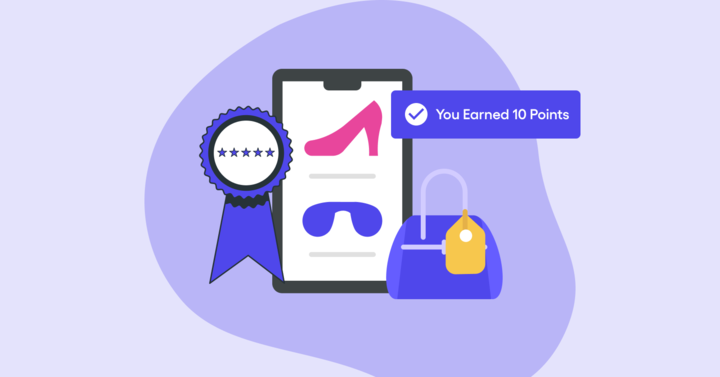Customers have grown to expect personalized loyalty rewards from the brands they frequent.
Customers want rewards and experiences tailored to them – their preferences, purchase history, and needs. In exchange for their loyalty, they expect you to recognize them as individuals.
This comprehensive blog will explore,
- what personalized loyalty rewards are,
- why customers expect personalized loyalty rewards
- what are its benefits
- how can businesses deliver personalized rewards
- successful examples
- challenges and solutions
Increase your ROI upto 20X by rewarding your customers with WPLoyalty’s pre-built loyalty campaigns.
What Are Personalized Loyalty Rewards?
Personalized loyalty rewards are loyalty program perks and benefits that are tailored to individual customers based on their behavior, preferences, and data, rather than the same rewards for everyone.
In a traditional customer loyalty program, every member earns the same points and redeem the same rewards (e.g. $5 off after 500 points). By contrast, a personalized approach adjusts rewards to fit each customer’s unique profile.
For example, a coffee shop’s loyalty program might give customized rewards: one customer gets a free birthday latte (because the program knows their birthday), while another receives a discount on dairy-free milk (because they always order vegan drinks).
As Deloitte’s research notes, shoppers nowadays “crave more than familiar, lookalike rewards” – in fact, 73% of consumers want personalized loyalty program rewards (yet only 45% of brands offer them).
Why Do Customers Expect Personalized Rewards?
Customers expect personalized loyalty rewards because consumer expectations have evolved. They expect more from loyalty programs.
Shoppers are inundated with choices and loyalty programs – the average U.S. consumer belongs to over 15 programs. So they won’t pay attention to programs that don’t stand out. Personalization has become the key differentiator.
According to a 2024 survey, 61% of U.S. adults value loyalty programs that are tailored to their shopping preferences.
Customers aren’t just asking for personalization, they assume serious brands will provide it.
Why this expectation?
First, customers know their data is valuable. They are willing to share personal info with brands, but they expect something in return.
“It’s that personalized, experiential recognition and reward that consumers are asking for if they’re sharing their information with the brand.”
– David Slavick, co-founder and partner with Ascendant Loyalty
It feels like a fair tradeoff – you (the business) get data and loyalty, they get highly relevant rewards.
Second, personalization makes customers feel valued. Research shows 81% of consumers want brands to get to know them and understand their needs.
When your loyalty program greets a customer by name, remembers their birthday, or surprises them with their favorite product on sale, it creates a sense of being appreciated as an individual.
Lastly, competition drives expectations. If your competitor offers personalized loyalty rewards and you don’t, customers will notice.
So, to earn customer retention, companies have to meet the rising bar of personalization.
What Are the Benefits of Personalized Loyalty Programs?
Implementing a personalized loyalty program offers many benefits for an e-commerce business. Here are some of the benefits
- Higher Customer Retention and Acquisition: Personalized programs excel at keeping customers coming back. When customers feel the program is made for them, they spread the word, which helps to acquire new ones. This leads to improved retention rates and more frequent repeat purchases.
- Increased Customer Spend and Lifetime Value: Engaged loyal customers tend to spend more over time. By targeting customers with the right offers at the right time, a personalized loyalty program increase average order values and total spend per customer. Over the long term, each customer’s lifetime value grows.
- Improved Customer Satisfaction and Experience: A loyalty program that offers useful rewards (instead of irrelevant ones) naturally makes customers happier. Customers appreciate when a brand saves them time or money by knowing their preferences. Increased satisfaction leads to referring more people.
- Higher Engagement and Brand Connection: Personalized loyalty programs often incorporate interactive elements (like challenges, polls, or birthday perks) that keep customers engaged beyond transactions. Customers who engage frequently with your brand (through apps, emails, social media tied to loyalty) will remain loyal.
- More Effective Marketing ROI: By targeting rewards and communications to the people most likely to respond, you waste fewer marketing dollars. Personalized loyalty marketing (emails, notifications, offers) tends to have higher conversion rates than mass marketing.
How Can Businesses Deliver Personalized Rewards?
Here are some effective ways businesses can deliver personalized loyalty rewards:
1. Segment Your Customers
Start by segmenting your customers into meaningful groups based on their behavior or attributes.
For example, segments might include “high spenders,” “frequent shoppers,” or “interested in category X.” Segmentation allows you to craft different reward offers for different groups.
A simple example: your VIP segment (top 10% of customers) could receive an exclusive bonus reward or faster earning rate, while new customers get a personalized sign-up reward. By grouping customers, you can deliver semi-personalized loyalty rewards at scale.
Over time, you can get more granular as you collect more data, eventually approaching one-to-one personalization for top customers.
2. Use a Loyalty Platform or Software
Take advantage of technology designed for loyalty personalization. Many modern loyalty program software solutions (like WPLoyalty or LoyaltyLion) have built-in personalization features.
These platforms let you set up and manage customized loyalty programs and automatically trigger personalized rewards or messages based on your configuration.
For instance, you can set up rules such as “if customer hasn’t purchased in 60 days, send a win-back coupon for their favorite product category.” Or “after a customer buys item X, recommend a related item with bonus points as a reward.”
Make sure whatever tool you use can integrate with your e-commerce system and customer database so that it can personalize based on real data.
3. Offer Multiple Ways to Earn and Redeem Rewards
No two customers are alike – some prefer discounts, others love free products, some might value exclusive experiences. To deliver truly personalized rewards, give customers options.
For earning, incorporate various activities: purchases, social media engagement, writing reviews, referrals, etc., so each customer can engage in ways that suit them.
For redeeming, provide a mix of reward types: percentage discounts, free items, access to events, charitable donations, etc. Let customers choose what appeals to them.
For instance, a beauty e-commerce store could allow loyalty points to be redeemed for products, beauty tutorials, or entries into a VIP giveaway – the customer picks what they value.
This flexibility is personalization, because each customer curates their own reward experience.
One great strategy is to let customers select their preferred reward from a short list (say, on their birthday, they could choose one of three gift options). That simple choice ensures the reward feels personal.
4. Personalize Communications and Timing
How you deliver the reward matters too. Use the data you have to personalize your loyalty communications.
Address customers by name in emails and messages, and reference their specific behavior (“Since you loved
, we’ve got a treat for you…”).Recommend products or content related to their past purchases as part of your loyalty messaging.
Also, consider timing – personalize when you send offers by observing customer habits. If you know a customer tends to shop on weekends, send their tailored reward on a Friday when they’re likely planning purchases.
Many email marketing tools and CRM systems integrated with loyalty programs can automate this kind of personalization.
Even a simple personalization like sending a birthday reward email on the right day with a special message can delight customers and drive them to redeem.
5. Add Gamification and Challenges
Gamified rewards can be personalized to each user’s activity. For example, you might introduce tiered loyalty system or personal challenges such as “Complete 3 purchases this month to unlock a reward” – and the key is to base the challenge on that customer’s baseline activity.
If Customer A usually shops once a month, a challenge to make 3 purchases is meaningful (and stretches their engagement).
For a more frequent shopper, maybe a higher challenge fits. By adjusting challenges or gamified elements to the individual, you keep it attainable and motivating.
Starbucks does this well with its “Star Challenges” in the app, which often are tailored to the user (e.g. “Buy two breakfast items this week for 50 bonus stars” if they know you often get breakfast).
Personalizing gamification keeps customers hooked and gives them goals that resonate with their habits.
6. Surprise with Unannounced Perks
Not every reward needs to be pre-planned in the program structure. You can occasionally surprise customers with spontaneous personalized perks.
For instance, send a loyal customer a surprise coupon for a product category they’ve been browsing (showing you notice their interest), or upgrade their shipping method for free on their next order because they’ve been a member for a year.
These little unexpected rewards, when aligned to the customer’s preferences, create delight. They feel organic and personal – “the brand noticed me and went out of their way.”
Surprise rewards can be delivered via personalized note, email, or in-package insert. They don’t have to cost much; it’s the personal touch that counts.
7. Continuously Update Based on Feedback and Data
Personalization isn’t a set-and-forget tactic. To successfully deliver relevant rewards, you should iterate.
Pay attention to what rewards each customer uses or ignores. Solicit feedback through surveys (“Did you enjoy this reward?”). Use that information to fine-tune future offers.
For example, if a segment of customers never redeems free shipping but responds to bonus point offers, adjust their rewards accordingly.
Over time, your system can become smarter – possibly employing AI to predict what each customer will respond to.
Many businesses are now using AI-driven personalization engines that analyze customer behavior and automatically select which offer (out of a pool) to show each user for maximum impact.
Whether through AI or manual analysis, the idea is to keep improving how personalized your rewards are.
In summary, businesses can deliver personalized rewards by combining data-driven tools with customer-centric creativity.
Examples of Successful Personalized Loyalty Programs
Many leading brands have implemented successful personalized loyalty programs. Let’s look at a few real-world examples that illustrate how personalization can take loyalty to the next level:
1. Starbucks Rewards
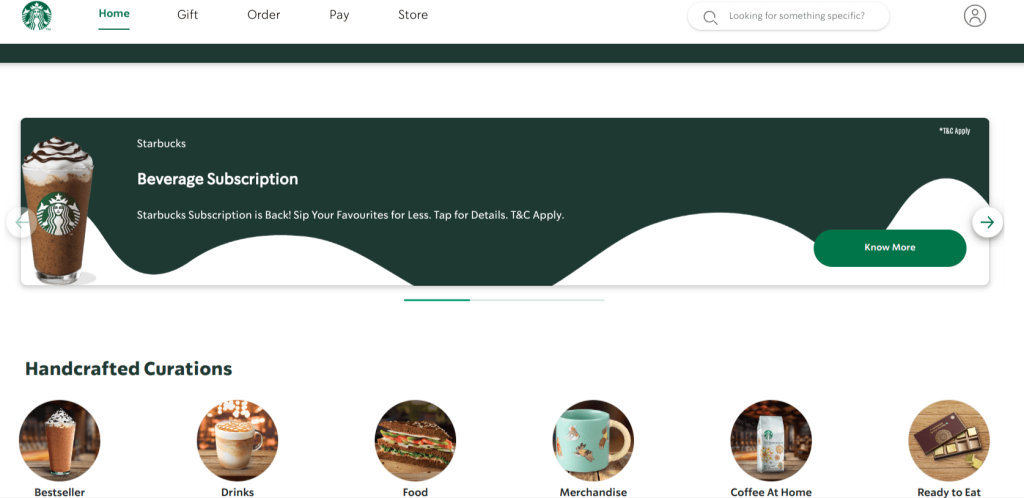
The Starbucks loyalty program is often cited as best-in-class for personalization. Via the Starbucks mobile app, the company gathers data on every purchase (favorite drinks, usual store locations, time of day of visits, etc.).
Starbucks then uses this data to deliver personalized offers to members. One member might receive a coupon for a breakfast sandwich (because they buy coffee every morning but never food), while another gets bonus stars for trying a new flavored latte (because the data shows they favor lattes).
The app also surprises users with personalized challenges (like “Earn 50 stars by ordering two of your usual Frappuccinos this week”) and a free birthday drink reward.
2. Sephora Beauty Insider
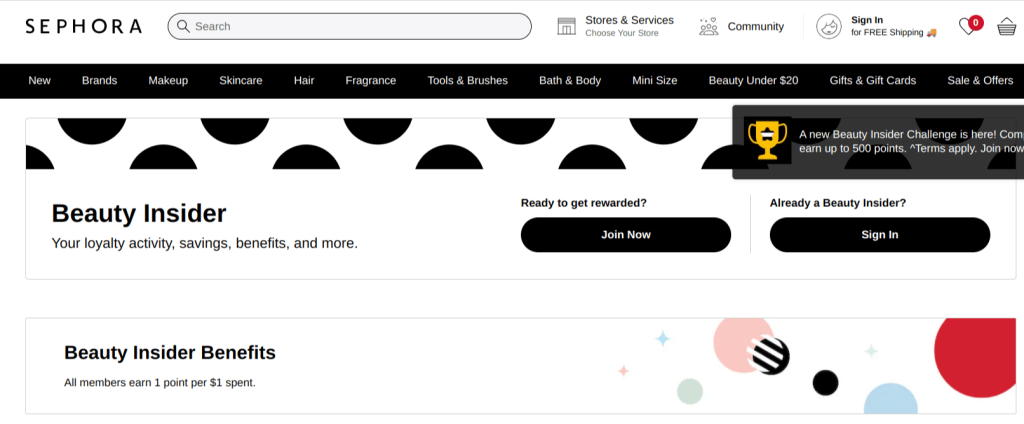
Sephora’s Beauty Insider loyalty program uses personalization to enhance the beauty shopping experience.
Sephora collects data on customers’ purchase history, product reviews, beauty profile (including skin type and preferences), and even their in-app quiz results. Using this info, Sephora provides personalized product recommendations and offers to each member.
They also offer birthday gifts where members can choose one of a few sets based on their preference (skincare vs. makeup, etc.), adding a personal touch.
This high level of personalization has made Beauty Insider very popular – members feel like they have a personal beauty concierge.
3. Amazon Prime / Amazon Personalization
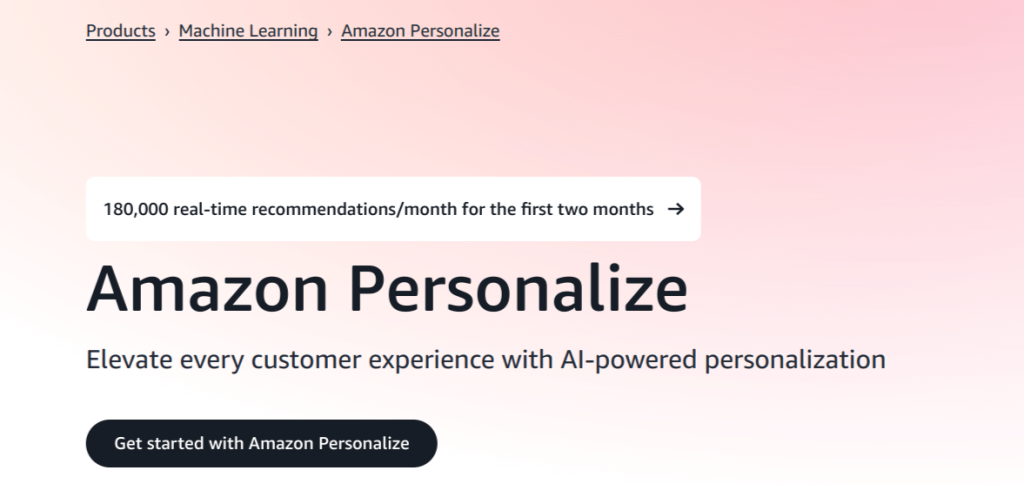
While Amazon Prime is a paid membership program (offering universal benefits like free shipping and Prime Video), Amazon as a whole is a master of personalization in loyalty and shopping.
Amazon analyzes each customer’s browsing and purchase history to personalize the shopping experience – from recommending products on the homepage to sending personalized “deal of the day” emails.
The company’s famous recommendation engine (“Customers who bought X also bought Y”) drives additional purchases by showing personalized suggestions.
4. Nike Membership (NikePlus/Nike Members)
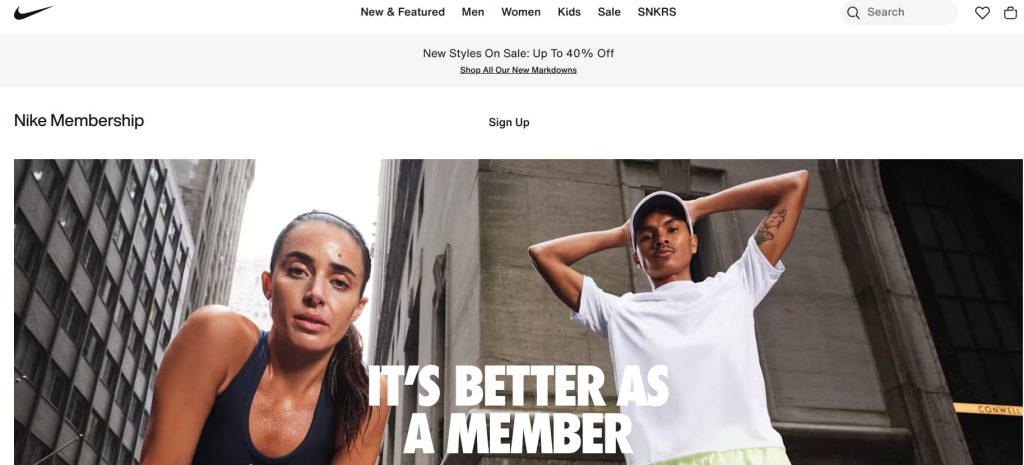
Nike’s loyalty program, often just referred to as Nike Membership, integrates deeply with its apps (Nike Run Club, Nike Training Club, and the retail app).
Nike collects data like customers’ preferred sports, workout goals, and even activity tracking (if the customer opts in).
In return, Nike delivers personalized perks: a member who frequently runs might get invites to local running clubs or early access to new running shoes, while a basketball enthusiast could get a personalized video from a Nike athlete or access to exclusive Jordan sneaker drops.
One standout example: Nike’s app can unlock a locker in-store that has the exact shoes you reserved, with your name on the locker – a highly personalized, omnichannel perk.
5. PetSmart Treats

To show an example outside of fashion/coffee, PetSmart’s Treats loyalty program is noteworthy for personalization based on pet profiles.
When customers join, they provide info about their pets (species, breed, age, etc.). PetSmart uses this to tailor rewards to the pet.
For example, if you have a puppy, you might get a discount on puppy training classes or food tailored for young dogs.
PetSmart also sends tips and content relevant to your pet’s life stage as part of loyalty emails. This personalized approach makes pet owners more loyal to PetSmart.
These examples demonstrate that whether you’re a global giant or a niche retailer, personalization can take many forms. The common thread is using customer data to inform unique rewards or experiences:
- Starbucks uses purchase patterns to personalize offers in real time.
- Sephora uses profile and purchase data to personalize recommendations and gifts.
- Amazon uses browsing and purchase history to personalize the entire shopping journey.
- Nike uses preference and activity data to personalize both digital and in-store experiences.
- PetSmart uses profile data (the pet’s info) to personalize rewards to the pet’s needs.
Challenges in Personalizing Rewards and Solutions
Implementing personalized loyalty rewards requires managing customer data, and addressing customer pain points, among other hurdles.
Here are some common challenges in personalizing rewards – along with tips on how businesses can overcome them:
Challenge 1: Data Silos and Integration
One of the biggest technical challenges is having customer data scattered across multiple systems (online store, physical store, email platform, etc.) that don’t talk to each other.
Disconnected data makes it hard to get a complete view of the customer, which in turn hampers personalization.
In fact, only 38% of marketers say they have customer data well-integrated and formatted to make good decisions.
Solution
Work towards a unified customer database or use integration tools. This means adopting a Customer Data Platform (CDP) or ensuring your loyalty software integrates with your e-commerce platform and CRM.
Challenge 2: Privacy Concerns and Data Security
Collecting and using personal data can raise customer privacy concerns. With data breaches and privacy scandals in the news, consumers are cautious.
A survey found 86% of consumers are increasingly worried about data privacy and security, and nearly half have backed out of a purchase due to privacy worries.
Solution
Be transparent and ethical in data use. Clearly communicate what data you collect and how it powers their personalized rewards. Always secure your data – use encryption, follow compliance laws like GDPR/CCPA, and don’t collect more than you need.
Challenge 3: Choosing the Right Technology and Tools
Personalization often requires technology, and the myriad of martech tools can be overwhelming.
Small businesses might struggle deciding whether they need a fancy AI tool, a CRM, a CDP, or which loyalty platform has the features they need.
Solution: Align your tech choices with your personalization strategy and scale. There are all-in-one loyalty solutions like WPLoyalty, Loyaltylion and more that are geared for all types of businesses that are user-friendly. Take advantage of free trials and demos.
Every challenge is surmountable, and many brands have navigated these issues successfully. By anticipating these hurdles and planning for them, you can implement personalized loyalty rewards smoothly.
Get started with WPLoyalty’s customizable loyalty programs and reward customers with multiple points and rewards.
Final Words
Businesses of any size can start implementing personalized loyalty rewards today. The key is to start with a plan, use the tools within your reach, and focus on the customer’s experience.
Even simple personalization efforts (like a tailored welcome coupon) can have a big impact, so don’t be intimidated – you don’t need to be Amazon on day one.
By implementing the basics now and building on them, you’ll create a loyalty program that grows stronger overtime.
Also read:
- 6 Types Of Loyalty Programs: Find The Perfect Fit
- 50 Best Referral Program Examples That Actually Work
- How to Reward Loyal Customers: 10 Best Ways
- B2B Loyalty Programs: Complete Guide With Types, Examples & How-Tos
- 5 Best WordPress Referral Plugins For 2025
- How To Create A WordPress Referral Program?
- 5 Best WordPress Loyalty Plugins 2025
Frequently Asked Questions
Rewards for loyalty typically include discounts, exclusive access, early product releases, free shipping, points systems, birthday gifts, VIP events, personalized offers, and tiered perks based on engagement level.
The 3 R’s of loyalty are Recognition (acknowledging customer value), Rewards (tangible benefits for continued patronage), and Relevance (ensuring perks align with customer preferences and behaviors).
Brands can personalize rewards by analyzing purchase history, using AI to predict preferences, offering choice in redemption options, creating milestone-based incentives, and tailoring communications to individual shopping patterns.
Personalization increases loyalty by making customers feel understood, creating stronger emotional connections, boosting engagement, increasing redemption rates, and enhancing the perceived value of the relationship.
Reward loyalty through tiered benefits, surprise-and-delight moments, personalized recommendations, exclusive community access, and value-add services that recognize customer history and anticipate future needs.
